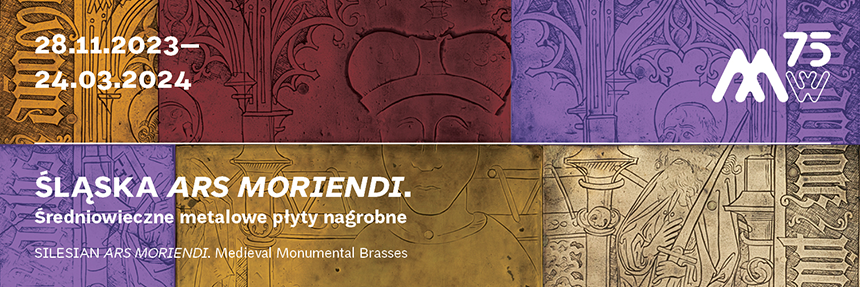Wenceslaus of Żagań: a pious prince
Of all historical figures of princes and bishops commemorated by monumental brasses featured at this exhibition, Duke Wenceslaus of Żagań seems to best impersonate the medieval ideal of piety. Born between 1420 and 1434 as the third son of Duke Jan I of Żagań, he was designated to co-rule the duchy with his brothers: Balthasar, Rudolf, and Jan II. But he never actively participated in politics, likely because some – undermined – mental disability which likely affected other aspects of his life, including that he never married.
In late 1472, the Duchy of Żagań was sold to the Dukes of Saxony and Wenceslaus moved to Wrocław. He settled in a small wooden house in St Nichols Street, close to St Barbara’s Church. He became a tertiary and led a pious, quiet life. He was a member of St Mary’s fraternities at the Churches of St Mary Magdalene and St Elizabeth and also an altarist at Wrocław Cathedral. His devotion to St Barbara’s Church next to which he lived was fully expressed in his testament which provided funds for the church’s construction, furnishings, and liturgical objects: chalices, chasubles, books. The remainder of his estate was to be distributed among the poor.
Although Wenceslaus forwent ducal splendor and – as the inscription on his monument informs – wanted to be buried among ordinary people in St Barbara’s churchyard as an act of humility, his wish was not fully honoured. He was given a splendid funeral and, the churchyard presumably considered to low for a ducal burial – his body was entombed under the floor in the church’s southern porch so that the faithful entering the church would tread upon his grave. Originally, his burial chamber was likely covered with a inscribed stone slab which had already perished by the nineteenth century. Alongside it and the featured brass, which was placed on his tomb sometime later, the duke was commemorated with a painted epitaph with the scene of the Last Judgment, also on display.
Fot. 1: The figure of Duke Wenceslaus of Żagań in his painted epitaph with the scene of the Last Judgment from St Barbara’s Church in Wrocław, workshop of the Master of the Years 1486–1487, ca. 1488, phot. Arkadiusz Podstawka.
